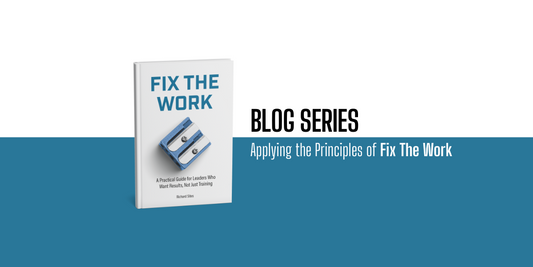Don't Let Perfectionism Be A Roadblock
Richard SitesShare This Post
We need to be honest about something: instructional design isn’t inherently creative. That doesn’t mean there’s no room for creative thinkers. It doesn’t mean you won’t benefit from having clever problem-solvers or folks with a strong visual eye. It just means the job—the actual task at hand—isn’t all that complex.
At its core, instructional design is about getting the right information into the hands of the right people, in a format they can understand and apply. That’s it. Everything else—UI/UX, branding, media production, distribution platforms—is important, but none of it should be slowing you down.
And yet, too often, it does.
Teams get bogged down in trying to make it perfect. They burn days debating font sizes, finessing slide transitions, or agonizing over whether to use Rise or Storyline or video or PDF. They treat every decision like it’s irreversible. Spoiler: almost nothing we do is irreversible.
I’ve had to draw a line more than once. My goal is to operate under a simple mandate I call “5-5-Live.” Once we have strategic alignment—meaning we know what the training is for, who it’s for, and what it’s supposed to do—the team has five business days to plan it and five business days to build it. Then we launch. After that, we watch what happens in the wild and adjust accordingly.
Now, if you're doing a six-figure rebuild of your enterprise sales curriculum, sure—you probably need more than ten days. But even then, it’s worth asking: why?
With so many rapid development tools available, why is it taking so long?
Why can’t we get something—anything—in front of learners in the next few weeks?
Are we really working through legitimate blockers, or are we polishing something that should already be in the field? Are we letting perfectionism creep in? Are we indulging in unnecessary creativity?
Here’s the thing: flawed training that learners are actually using is infinitely more valuable than perfect training that’s still trapped in a Google Drive folder.
The best creativity in this field doesn’t come from ornate interfaces or clever copywriting. It comes from figuring out how to get the right information to the right person, at the right time, in a way that works. That’s where your brainpower should go.
Everything else is fluff. Helpful fluff, maybe. But still fluff.
Instructional design is art. but it's also utility. So, make a decision. Ship the thing. And make it better once it’s live.
Because a rough draft in the hands of learners beats a masterpiece in limbo—every single time.




